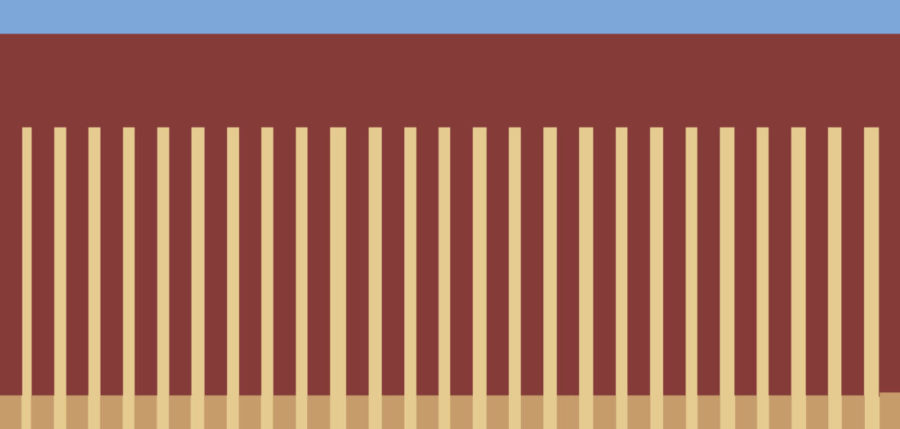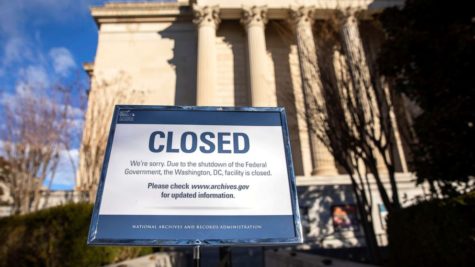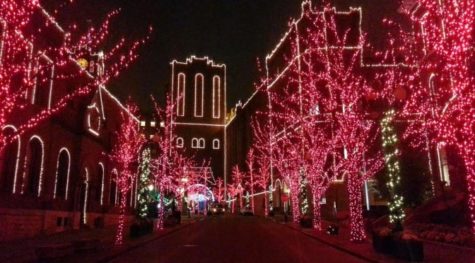Breaking the Wall
While on the campaign trail, President Donald Trump always returned to one talking point. Mexico. Time and time again he vowed to ‘build a wall’ in order to protect the United States from the looming threat that is illegal immigration.
In his infamous candidacy speech, Trump emphasized the danger that undocumented immigrants posed.
“When Mexico sends its people, they’re not sending their best…They’re sending people that have lots of problems, and they’re bringing those problems with us. They’re bringing drugs. They’re bringing crime. They’re rapists,” said Trump.
Listening to Trump would lead you to believe that undocumented immigrants are a huge national security threat, but the statistics say otherwise. A 2015 study from the Cato Institute found that native-born citizens are more likely to be convicted of crimes in comparison to undocumented immigrants.
Four years later, Trump maintains his claim that undocumented immigrants are associated with higher crime rates.
“Without a Wall our Country can never have Border or National Security. With a powerful Wall or Steel Barrier, Crime Rates (and Drugs) will go substantially down all over the U.S.” tweeted Trump.
As with most things Trump says, that’s simply not true.
A study published in Criminology, a crime journal, concluded that there was no positive relationship between undocumented immigrants and crime, and areas with large populations of undocumented immigrants may actually contribute to a drop in crime rates.
The primary reasons that Trump cites for why the wall should be built aren’t supported by any studies. No matter what he or anyone else in his administration says, there is no immigration crisis. Any indication otherwise is nothing more than fear mongering.
Portions of a ‘wall’ already exist along the border. The Secure Fence Act of 2006 authorized the construction of a double layered fence along different ports of entry. This fence was estimated to cover 700 of the 1,954 miles that make up the U.S.-Mexico border.
The total cost for this fence ended up being around $2.3 billion, with $450 million allocated for maintenance. This is a high price tag for a wall roughly a third of the length and significantly lower quality than the concrete behemoth that Trump envisions.
This form of border protection grows more and more obsolete every day. Although no formal data exists for the number of people who cross the border, the amount of apprehensions has been declining for over a decade.
According to the New York Times, a little less than 800,000 people were apprehended or turned away at the border in 2008. In 2017, that number dropped to a little over 400,000. This trend continues for unauthorized immigration as a whole.
While the efforts to halt the flow of undocumented immigrants from entering the United States are understandable, Trump’s solution to this problem is outdated and misdirected.
An often forgotten aspect of the border wall discussions is the environment. Very few discussions have thought to take into consideration the devastating effects that a border wall would have on the ecosystem.
Migration of all kinds would be interrupted by the erection of the wall. The border is home to over 1,500 species of plants and animals, 62 of which are considered critically endangered. If built, it would greatly limit the habitat of these animals, along with their chances of finding food, water, and mates.
Regardless of how long or how tall this wall is, the consequences will inevitably fall upon the wildlife who call the border their home. Walls would fragment entire populations, and habitats, threatening biodiversity and putting animals at risk of extinction.
Trump and his administration have proven that they have little regard for the effect that his border wall would have on the environment. The proposed areas that the wall would be built on go through seven major conservation sights, such as Big Bend National Park and the Lower Rio Grande Valley National Wildlife Refuge.
Following the end of the government shutdown, Trump hinted at the idea that he may sign an executive order to build the wall in the name of national security. This pushes the idea even further that Trump cares little about the repercussions that his wall would have on the environment.
The REAL ID Act grants the Department of Homeland Security the authority to waive any and all laws in the name of national security. Laws which include the Endangered Species Act, Clean Air Act and the Clean Water Act. These laws exist for a reason, and with a structure as intrusive as a fifty foot concrete wall, environmental oversight is nothing short of necessary.
Time and time again, Trump has talked about the logistics of his wall. His wall is constantly growing taller and increasingly complex.
“The Democrats, are saying loud and clear that they do not want to build a Concrete Wall – but we are not building a Concrete Wall, we are building artistically designed steel slats, so that you can easily see through it. It will be beautiful and, at the same time, give our Country the security that our citizens deserve,” tweeted Trump.
There are currently eight prototypes for the wall built in San Diego, ranging from 18-30 feet. Primarily made of concrete, with some being made of steel and other materials. According to the Orange County Register, the price of these prototypes is anywhere between $300,000 and $500,000.
While on the campaign trail, Trump himself said that the wall could be built for under $12 billion, but it’s simply not realistic. Reuters cites a 2017 internal report from the Department of Homeland Security, saying that the wall could cost up to $21.6 billion. A Senate report from the same year estimates that it would cost nearly $70 billion to build.
None of these reports take into account the cost of maintaining the wall or acquiring the land, which would only raise the total bill of the wall. This bill will not be footed by Mexico, but the American people.
Any possible benefits that his wall could have are far outweighed by the cost it will have on taxpayers and the delicate ecosystems found along the border. Trump’s wall is little more than a costly tribute to Trump and his ego.

Stacey Rojas, a senior at Mehlville High School and is part of the Journalism II team as a design editor. She enjoys playing video games and watching Criminal...
















